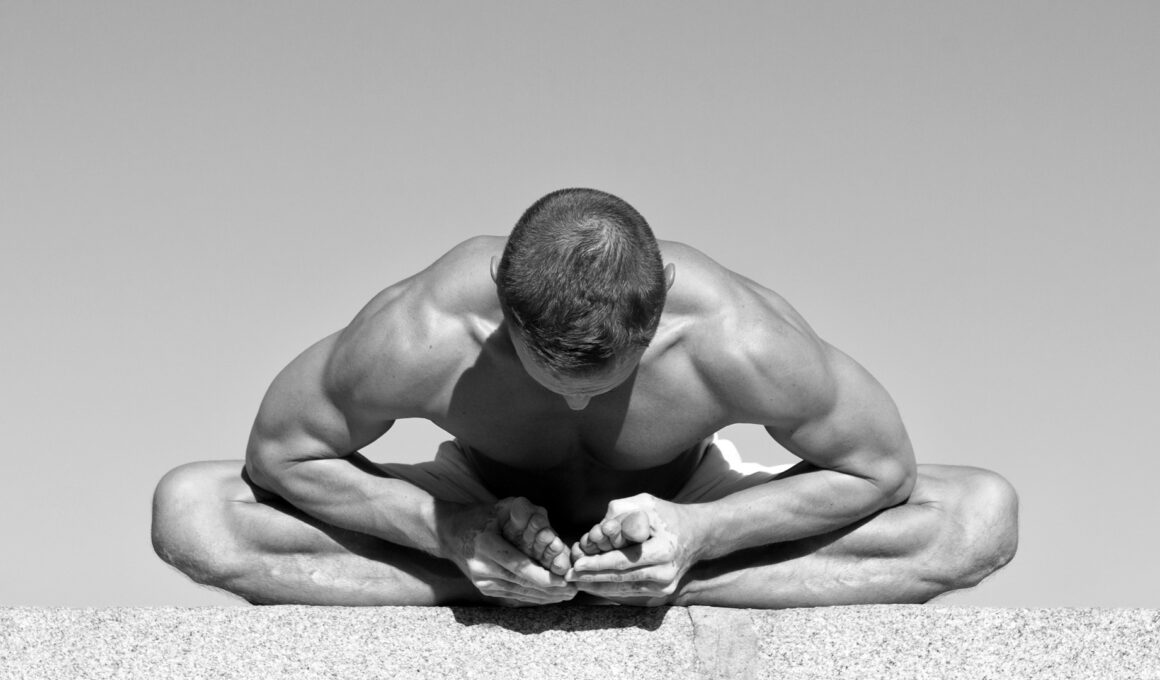Bodybuilding and yoga may not appear to be obvious bedfellows. Bodybuilding is all about lifting huge weights and grunting heavily in the gym in the pursuit of power. Meanwhile yoga is about being calm and relaxed while holding and gradually transitioning through a series of poses and stretches.
But while the two might seem to be antithetical to one another, this is actually the very thing that makes them such an ideal pairing and it’s the very reason that anyone interested in bodybuilding or weightlifting should add yoga into their routine.
In short, yoga will ‘fill in the gaps’ and provide what’s missing from your bodybuilding routine. The result will be better overall health and thus improved performance in the gym. Here’s why…
Flexibility
One of the main benefits of yoga is that it improves flexibility, enabling you to hold poses that you otherwise never would manage.
This is very important for bodybuilders for a number of reasons. For starters, this will enable a bodybuilder to achieve a great range of motion throughout their repetitions, which in turn will result in a fuller muscle development such that you aren’t creating short, stunted muscles.
At the same time, using yoga to increase flexibility can also help you to prevent what is otherwise one of the drawbacks of weightlifting. Unfortunately, lifting weights can reduce flexibility as the muscles end up getting in their own way somewhat. While yoga won’t completely undo the ill-effects of bulging biceps, it can certainly help to mitigate some of this effect.
Pain Reduction
Bodybuilders are athletes who regularly punish themselves in the gym by lifting heavy weights and throwing themselves around. This is all well and good, until the point where you pull a muscle in your lower back or in your legs and end up struggling with pain and discomfort.
Yoga is a useful tool for addressing this pain because it allows you to stretch and limber yourself up. At the same time, stretching can actually prevent these kinds of injuries in the first place by making your muscles and connective tissue more limber and flexible.
Balance and Control
Yoga also helps to strengthen that all important mind/muscle connection and is a great form of reflexive strength training for developing kinaesthetic awareness. In short, pulling off moves where you stretch your leg out over your head while standing on one foot can help you to improve your balance and your control over your legs, your core and more. This in turn means you’re likely to be able to squat with better form and perform all kinds of exercises with superior technique. Again it also reduces your chance of injuring yourself.
Strength Gains
Bodybuilders tend to focus very much on explosive strength, meaning that they ‘explode’ the weights up off of the floor/the rack. This is great for creating the microtears that lead to hypertrophy (AKA muscle growth), however it’s not so great for developing endurance and strength over prolonged periods. The result is that many bodybuilders will struggle to perform high repetitions or to hold a weight for a long period of time in one position (that’s not to say they aren’t better than average, but comparatively these skills suffer in relation to explosive strength).
Yoga is a different type of strength training because it involves static contraction/isometric holds. In short, this requires a type of muscle endurance that even some professional bodybuilders won’t have taken the time to develop.
This is actually particularly important for bodybuilders who are interested in competing professionally. Competing on the stage in bodybuilding involves holding a range of difficult postures designed to show of the muscles in the best possible light. This takes a lot of endurance and control in itself and yoga poses can actually provide the perfect way to practice.
Why Yogis Should Incorporate Bodybuilding Into Their Routines
Likewise, if you are someone who practices yoga regularly, then you should consider adding bodybuilding (or light resistance training at least) into your routine. Just as yoga can help to improve performance in the gym, so the reverse is also true. By practicing weight lifting, you will find that you are able to strengthen your core and your limbs to the point where you are more capable of pulling off more impressive balances and holding your poses for even longer. This is particularly true for those practicing more strength-based types of yoga such as Ashtanga.
The Importance of Training Between Styles
If you ever watch the popular bodybuilding documentary ‘Pumping Iron’, you will see that it opens with a short video of Arnold Schwarzenegger and Franco Columbu practicing ballet together. It was a good choice of shot for the filmmakers as it creates an obvious visual contrast. For some, this image might even be considered humorous – but in fact it makes perfect sense. By practicing ballet, Arnie and Franco were improving their posture, their control and their ability to flow gracefully from one pose to another. The moral of the story? Don’t stop at adding yoga to your training…
When we pick a particular type of class or pursuit to try and improve our health and performance, it’s very easy to become wedded to that idea and for it to become a large part of our identity. While this can be an enjoyable aspect of becoming proficient in something, it can also be restrictive if it means we won’t try specific types of training that fall outside of our usual dogma. This can then lead to us putting purposeful limitations on our training and failing to incorporate things that might otherwise benefit us. CrossFitters are not the enemies of bodybuilders and ballet is not antithetical to weightlifting. Combine different training methods and you will excel and beat the competition.
As Robert Heinlein said: ‘specialization is for insects’…




